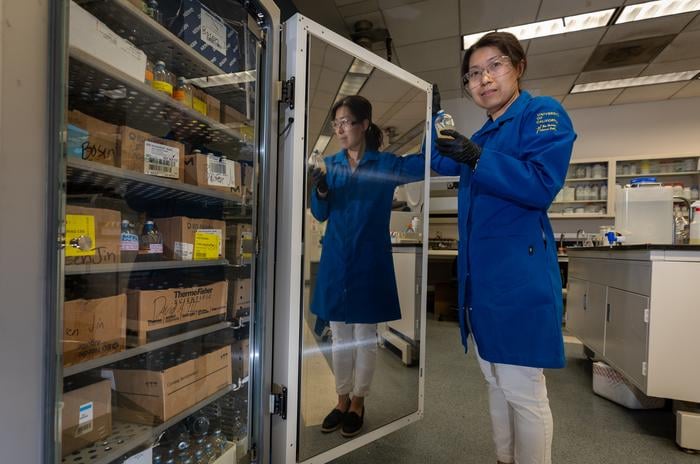Researchers at the University of California, Riverside have identified specific bacteria capable of destroying certain types of per- and polyfluoroalkyl substances (PFAS), commonly known as ‘forever chemicals’. This discovery marks a significant step towards developing cost-effective treatments for contaminated drinking water sources.
Nature’s Cleanup Crew: Acetobacterium
The research team, led by Yujie Men, an associate professor at UCR’s Bourns College of Engineering, found that bacteria belonging to the genus Acetobacterium can cleave the stubborn fluorine-to-carbon bonds in certain PFAS compounds. These microorganisms are commonly found in wastewater environments worldwide.
“This is the first discovery of a bacterium that can do reductive defluorination of PFAS structures,” Men explained. This breakthrough is particularly noteworthy because PFAS compounds are notorious for their persistence in the environment due to their strong chemical bonds.
However, Men cautioned that the bacteria were only effective on unsaturated PFAS compounds, which have double carbon-to-carbon bonds in their chemical structures. While this limitation exists, the discovery still represents a significant advancement in the field of environmental remediation.
Enzymatic Key to PFAS Breakdown
Crucially, the scientists also identified the specific enzymes within these bacteria that are essential for breaking the carbon-fluorine bonds. This discovery opens up new possibilities for bioengineers to enhance these enzymes, potentially making them effective against a broader range of PFAS compounds.
Men elaborated on the potential of this finding: “If we can understand the mechanism, maybe we can find similar enzymes based on the identified molecular traits and screen out more effective ones. Also, if we can design some new enzyme or alter this known enzyme based on the mechanistic understanding, we could be able to make it more efficient and work with a broader range of PFAS molecules.”
This research builds on Men’s previous work, which identified microorganisms capable of cleaving carbon-chlorine bonds in chlorinated PFAS compounds. Together, these discoveries significantly expand the range of PFAS compounds that can potentially be destroyed through biological means.
The use of bacteria to treat groundwater is particularly promising as a cost-effective approach. The microorganisms can destroy pollutants before the water reaches wells, with the process involving injecting groundwater with the preferred bacteria species along with nutrients to boost their numbers.
Why it matters: PFAS contamination is a widespread and persistent environmental problem, with these chemicals linked to various health issues, including cancer. The U.S. Environmental Protection Agency recently imposed strict limits on certain forever chemicals in tap water, setting a maximum of four parts per trillion. This regulation has intensified the search for effective PFAS cleanup solutions.
PFAS compounds have been used in thousands of consumer products since the 1940s due to their ability to resist heat, water, and lipids. They can be found in fire suppressant foams, grease-resistant paper wrappers, stain repellents, and many other everyday items. Their widespread use and persistence have led to significant environmental contamination.
While this research represents a significant step forward, several questions remain. The effectiveness of this method in real-world conditions, its scalability for large-scale water treatment, and potential ecological impacts of introducing these bacteria into different environments all need further investigation.
Future research in this field may focus on enhancing the identified enzymes to target a wider range of PFAS compounds. There’s also potential for combining this biological approach with other treatment methods for more comprehensive PFAS removal. As environmental concerns about PFAS continue to grow, discoveries like this offer hope for developing sustainable solutions to one of our most persistent pollution problems.


